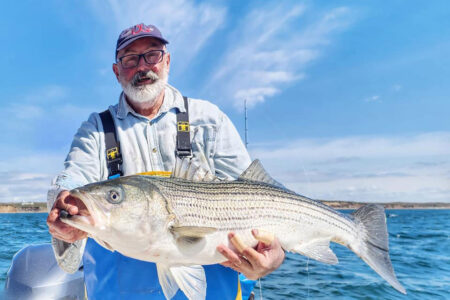
The documented history of our love of striped bass dates back to the 1600s.
Wading into the surf for the first time of the season and firing a cast toward the horizon, I am overcome with feelings of anticipation, hope, and excitement intensified by my surroundings…a stiff offshore breeze, small waves rolling in, gulls and terns flying by periodically crashing the water’s surface, and pods of bunker swirling off the beach.
From the boulder strewn coast of New England to the rivers and bays of the southeast, if you’re a striper afflicted surfcaster you are among those intimately familiar with a certain inexplicable aura that surrounds this magnificent fish. As angler and author Francis Endicott wrote in his 1881 Scribner’s Magazine article entitled The Striped Bass, “To the lover of rod and reel, the striped bass is the most important of all our sea fish…he is eagerly sought for by anglers of all classes and conditions of life; he affords such sport in various stages of his growth, from the puny half-pounder found almost everywhere on our Atlantic coast to the enormous ‘greenhead’ who makes his home in the break of the surf…he well merits the title which is sometimes bestowed on him of the game fish par excellence of the sea.”
Dick Russel summed up our infatuation with stripers this way in his 2005 book Striper Wars – – “Probably no near-shore fish, not even the prized Atlantic salmon, arouses so much emotion as the striped bass. To several million sport fishermen along the Atlantic coast, it is the premier gamefish to pursue, intelligent, crafty, the ultimate challenge for a rod-and-reeler. But it is more than the striped bass’s size, mettle, and flavor that gives them such mystique. They are an intrinsically American fish. It might even be said that striped bass are the aquatic equivalent of the American bald eagle.”
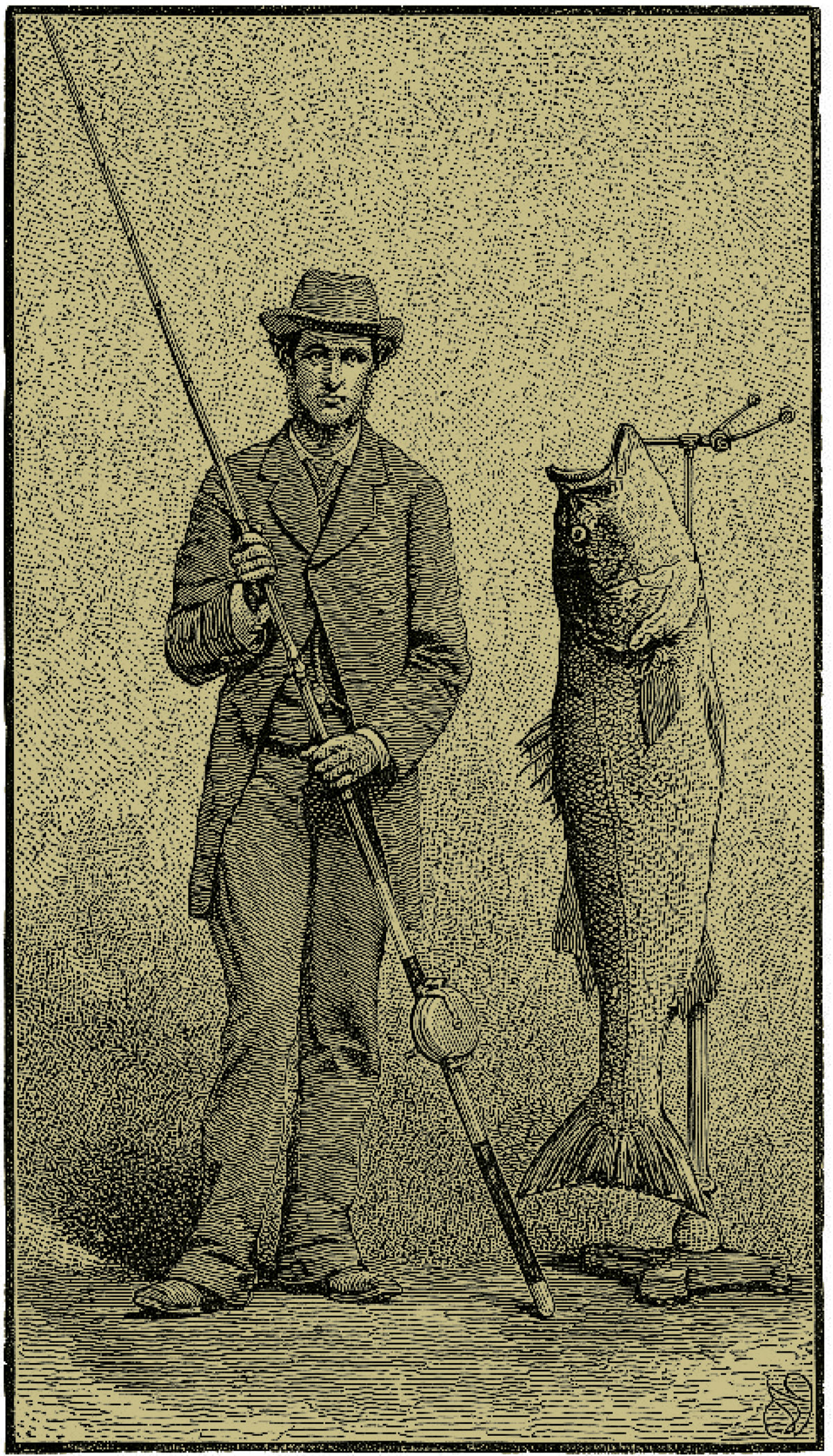
Revered For Centuries
The stripers’ strength, grace, and resilience has challenged and inspired anglers along the striper coast since the Pilgrims settled in Plymouth Colony. It was Englishman William Wood, a resident in the Massachusetts Bay Colony from 1629 to 1633, who, upon returning to England, called the striped bass “one of the best fishes in the country” observing that “though men are soon wearied with other fish, they are never with the basse.”
A walk through historical fishing literature certainly supports this notion.
For example, in the American Anglers Guide published in 1845, John J. Brown declared that “no angling can surpass the taking of the basse.” Two decades later, Thaddeus Norris, often referred to as the American Izaak Walton, provided encyclopedic coverage of all aspects of fishing practices popular in North America in the mid-1800’s in The American Angler’s Book: Embracing the Natural History of Sport Fish and the Art of Taking Them referring to striped bass as “the finest fish the American angler meets with.”
In Fishing in American Waters (1869) Genio C. Scott proclaimed “Nearly every American angler of a tidal river regards the striped bass as the fish of fishes par excellence to be angled for. It affords good sport with light tackle when its weight is but half a pound; and it tries both the mettle and skill of an angler after it rises to the ponderous importance of ten pounds, though it is said to attain to the weight of nearly a hundred.”
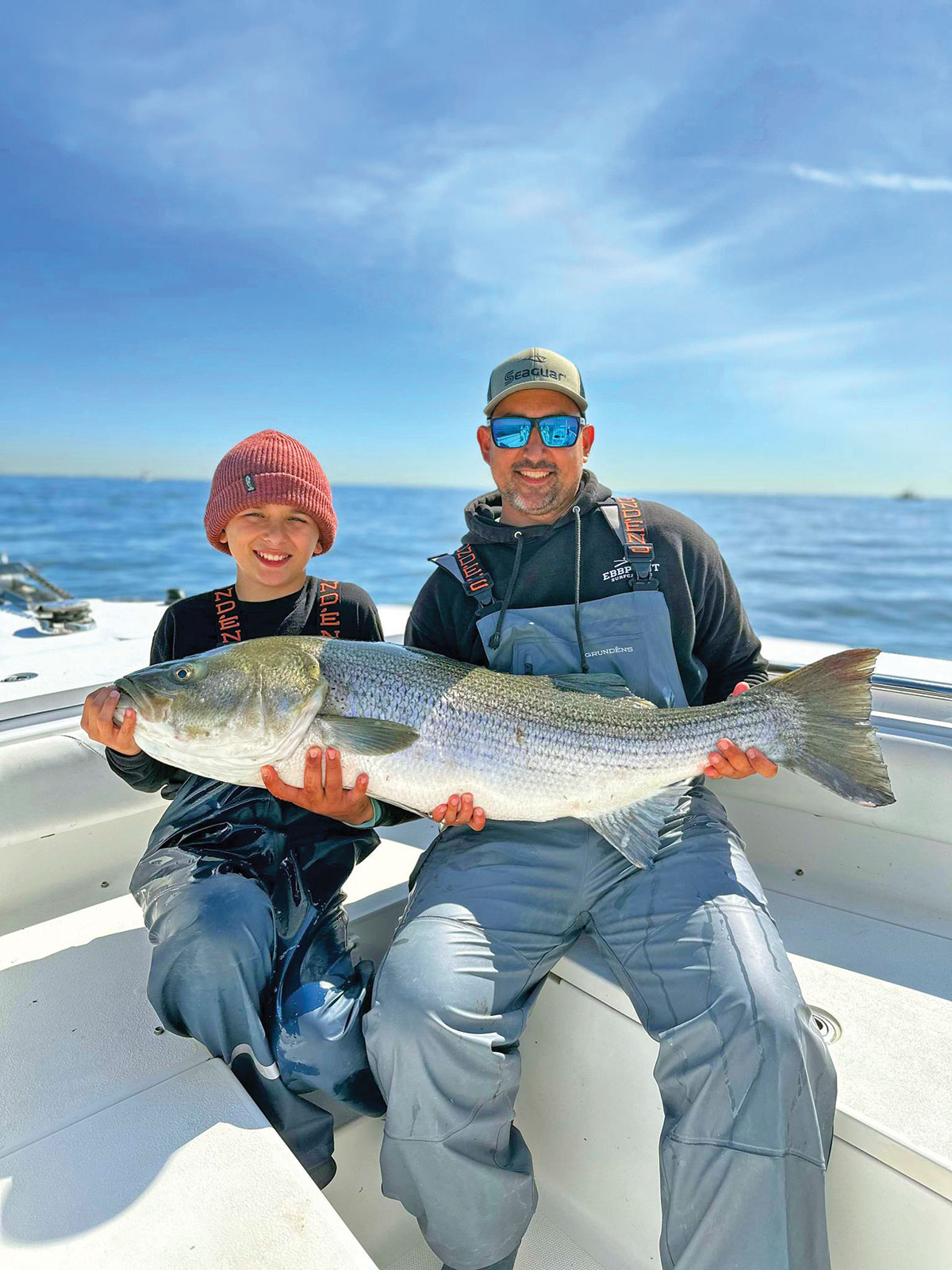
Louis Van Doren agreed, acknowledging that “although myriads of fish exist to give pleasure to the angler from the tepid waters of Florida up to the icy waves washing the Banks, at the head of the list stands the striped bass. Every wielder of the rod would put him there willingly with the taking of the striped bass what the salt water fisherman claims the right of terming the highwater mark of angling” in his 1884 book The Fishes of the East Atlantic Coast That Are Caught with Hook and Line.
A.M. Spangler, President of the Anglers Association of Eastern Pennsylvania, highlighted the draw of anglers to the striped bass in his 1889 book Near By Fresh and Salt Water Fishing by saying “Among the most esteemed – perhaps the foremost of our indigenous fishes is the Striped Bass. The movements of the striped bass are almost as quick as lightning, which, coupled with its great strength and remarkable powers of endurance, have given it a conspicuous place in the ranks of game fishes, especially along the Atlantic coast, where there is constant eager competition among a certain class of rod-and-reel men, to win the enviable celebrity of having captured the largest.”
Fast forward to the 1950’s when Saltwater Sportsman asserted that the striped bass had “a fanatical following that compares to none.” Half a century later, one only needs to frequent a nearby beach during the annual spring or fall run to witness the frenzied quest of anglers obsessed with our favorite fish.
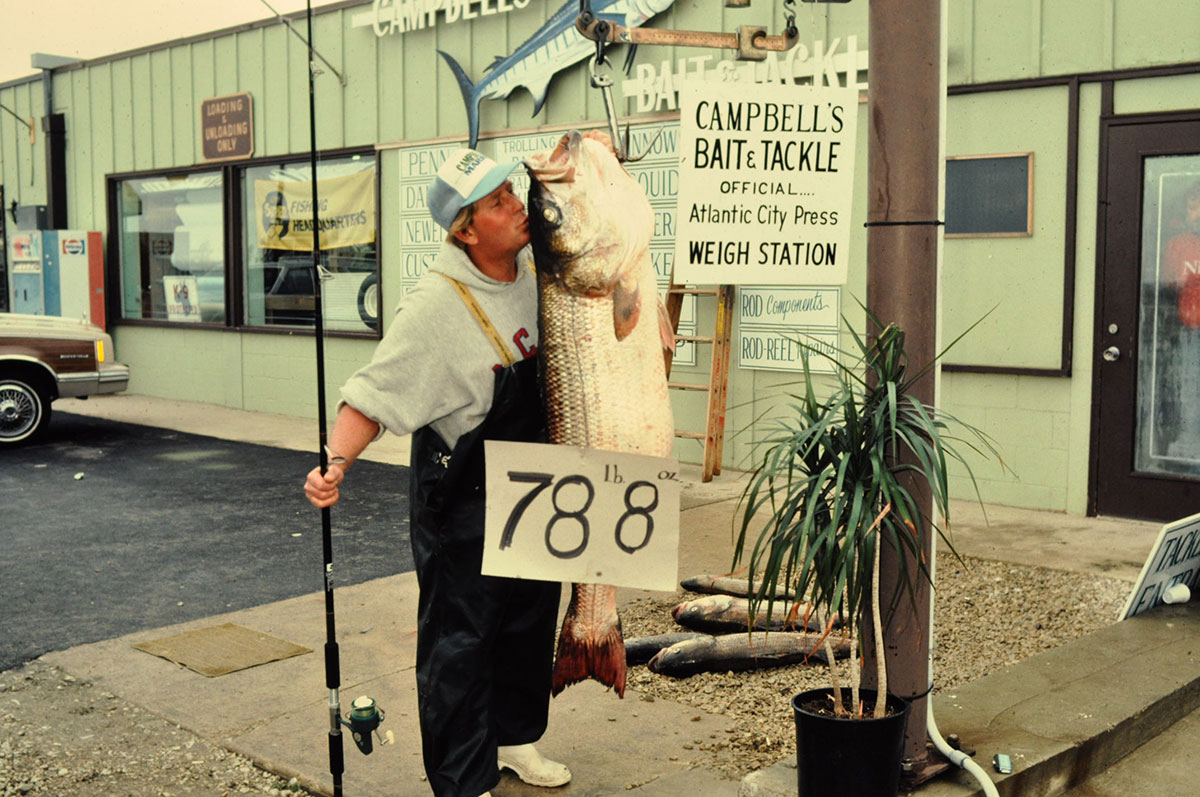
Call Of The Surf
So, what is it about stripers in the surf that captures our imagination and attention but likewise tries our souls? In the early 20th Century, author and co-founder of the International Game Fish Association (IGFA) Van Campen Heilner emerged as one of the world’s recognized authorities on saltwater fishing. In his 1920 book entitled The Call of the Surf he observed that “Surf fishing owes its attraction as much to the grandeur and inspirational appeal of environment as to the wonderful fishing it affords and the striper is a most beautiful fish to catch.”
American zoologist James DeKay published Zoology of New York in 1842. In Part IV: Fishes, DeKay commented that stripers “take the hook with great avidity and freedom and afford much sport to the angler.” And, in the first American edition of Izaak Walton’s classic The Complete Angler compiled in 1847 by Reverend George Bethune, Bethune remarked that “the utmost skill, nicety and judgement in tackle is required to take him…and when the striped bass is hooked, he is not yet caught, nor will he be if the rod is not managed by a cool, skillful hand.”
Sportsman, angler, and conservationist Robert B. Roosevelt founded the NY State Fishery Commission in 1867, served as fish commissioner for 20 years, and authored a number of books on angling, including Game Fish of the Northern States of America and British Provinces (1862) and Superior Fishing (1865). As far as striped bass go, he expressed great regard for them conveying his sentiments that “these glorious fish, the delight of the angler’s heart, the bravest and strongest, the largest without exception of the finny tribes that the sportsman pursues, frequent every cove and bay of our northern Atlantic coast and furnish the main attraction of salt water fishing” and noted that “great skill and experience are requisite for their successful capture and when abundant or hungry, they bite rapidly and boldly.”
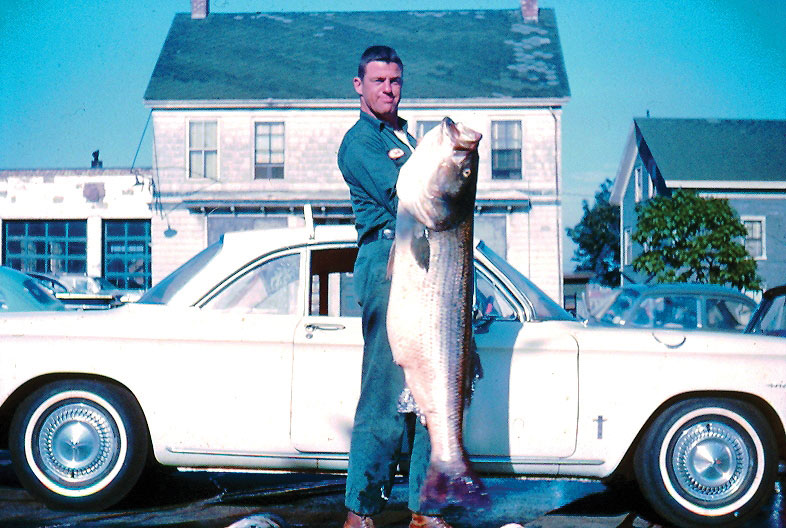
In Gun, Rod and Saddle (1869) author Parker Gilmore lamented that the striper “is game in the highest sense of the word, fighting with the most determined obstinacy as long as his strength will permit…and woe be the angler if unprepared he should strike his hook into one of the leviathans, for all his fishing paraphernalia will certainly receive so severe a shock as to render it for after use completely worthless.”
Alfred M. Mayer went further in Sport With Gun and Rod in American Woods and Waters (1883) stating “There is no royal road to this heavy surf fishing; with all the appliance for comfort which experience can suggest, there is a certain amount of hard work to be done and exposure to be borne as part of the price of success…and unless you can take a thorough soaking as a matter of course, you had better give up all thought of being a bass fisherman.”
And, in Near By Fresh and Salt Water Fishing (1889), A.M. Spangler described surf fishing for stripers in the following manner: “The angler readily comprehends when a good-sized specimen of that kind takes hold. It becomes clearly apparent from the word go that business is meant, and that skill in handling him is required if his capture is to be made in anything of a sportsmanlike way. The first dash of the striped bass at the lure is tremendous, and his struggles to escape when hooked, entitle him to admiration and respect…the startling style of his first dash is apt to unsettle the equanimity of the inexperienced, and prompt to action far more vigorous than is needful or prudent.”
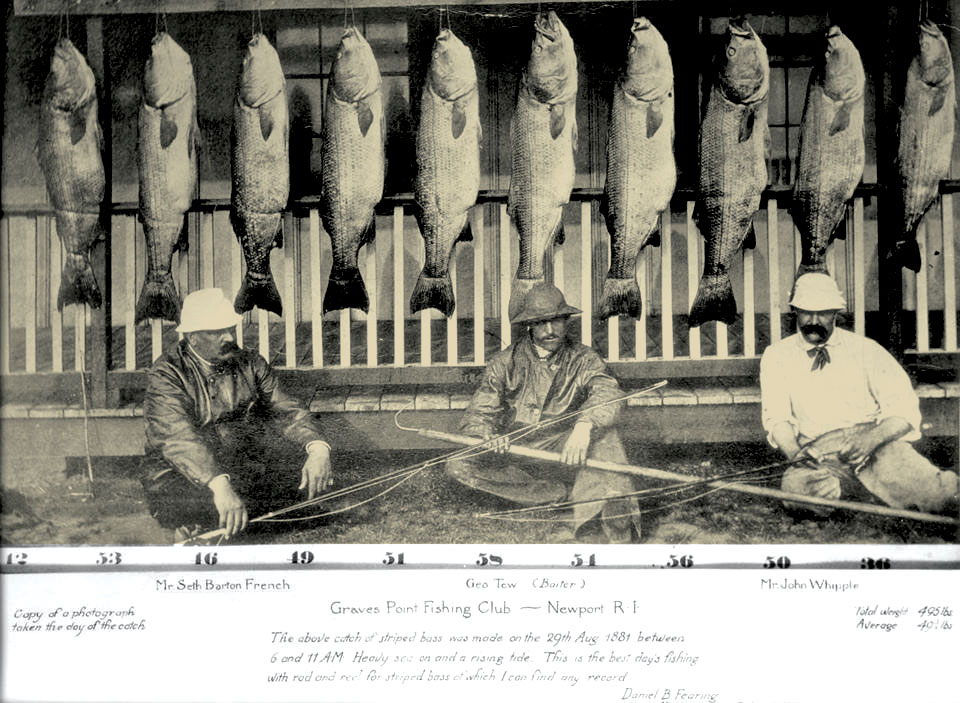
Francis Endicott contributed a chapter on striped bass to George Shield’s 1892 book American Game Fish and opined that “There is a most interesting uncertainty in angling which constitutes its great charm; you know not whether your cast will attract a minnow or a whale, and this is perhaps better exhibited in angling for the striped bass than for any other fish, for in many of his haunts you cannot know whether you will strike a fish of half a pound or one of sixty pounds.”
In Bass, Pike, Perch, and Others (1903), James A. Henshall summed up the excitement of hooking a striper in the surf in the following manner – – “In surf fishing the first rush of a large striped bass upon feeling the hook is something to be remembered. Once hooked, the bass makes his furious dash for liberty beneath the surface and exerts every ounce of his muscular fibre in the effort to escape.”
Outdoor writer O.H.P. Rodman published several books on saltwater fishing including A Handbook of Salt-Water Fishing (1938) and The Salt-Water Fisherman’s Favorite Four (1948) and highlighted striped bass fishing in both, writing that “The striped bass strikes savagely and is one of the gamiest fighters of the surf and inlets” and “Hard and big of mouth, voracious of appetite, the power of this fish can probably best be realized when you see him feeding in the roaring surf, splashing through the breakers with the greatest of ease, and handling himself will under control every second in the roughest of waters.”
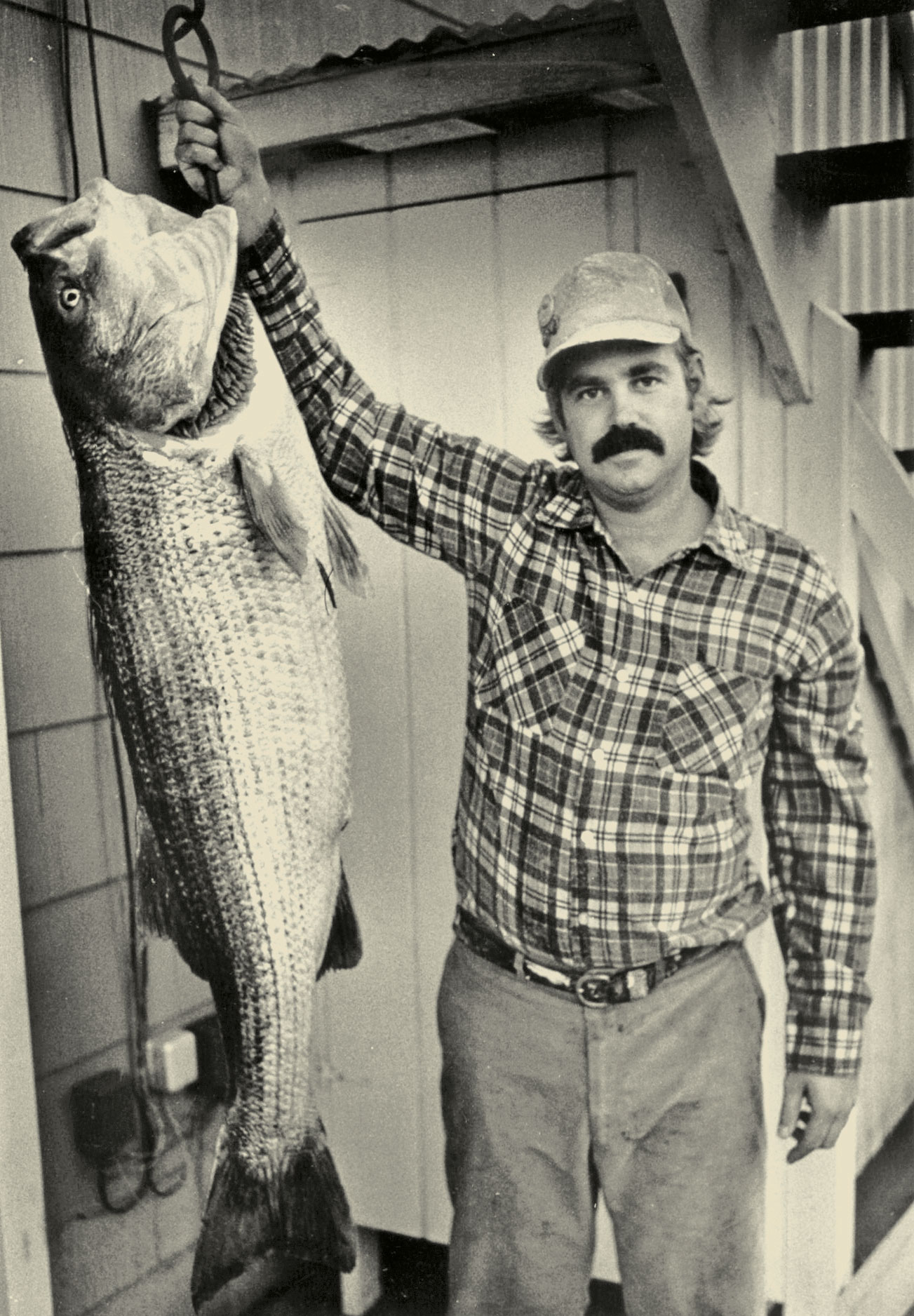
As The Fisherman’s Fred Golofaro aptly noted in the forward to Nick Karas’ The Complete Book of Striped Bass Fishing (2000), “Through periods of abundance and decline, and the many controversies over their management, the striper remains king of its inshore domain. They have survived pollution, overfishing, and disease, displaying a resilience that in many ways mirror the American way of life. Perhaps that is why so many anglers consider striped bass the ultimate catch.”
Finally, perhaps Van Campen Heilner said it best in his classic book Salt Water Fishing first published in 1937, when he proclaimed “Ten-pounders, twenty-pounders, forty-pounders, what difference does it make? The roar of old ocean, the cries of the gulls, the clean salt smell of seaweed, and the surging rush of a striper on light tackle; those are the things that count. Those are the things that linger when the season’s over and the fish have departed. Those are the things one sees in the dying embers of a fire as a blizzard whines past the frosty window of your room. Those are the memories one carries to the grave.”
| ABOUT THE AUTHOR |
| John A. Tiedemann is assistant dean of the School of Science at Monmouth University where he specializes in marine ecology, coastal zone management, environmental science, marine recreational fisheries, and marine and environmental education. Current applied research includes studies of striped bass and other recreationally valuable species, with an emphasis on best practices for catch-and-release of angled striped bass.
In 2011, Tiedemann launched a research and education campaign called Stripers for the Future in an effort to assist anglers in contributing to the conservation and long-term sustainability of the striped bass fishery. On Saturday, March 16, Tiedemann is assembling a panel of experts for the Stripers for the Future Roundtable discussion at the Saltwater Fishing Expo at the New Jersey Convention and Expo Center in Edison, NJ. The seminars and discussion will explore the science of, and various approaches to, catch-and-release that advance striped bass conservation, with short presentations by leading fisheries biologists, top striped bass anglers and marine recreational fishing industry and organization representatives. Get more details at saltwater.sportshows.com. |


